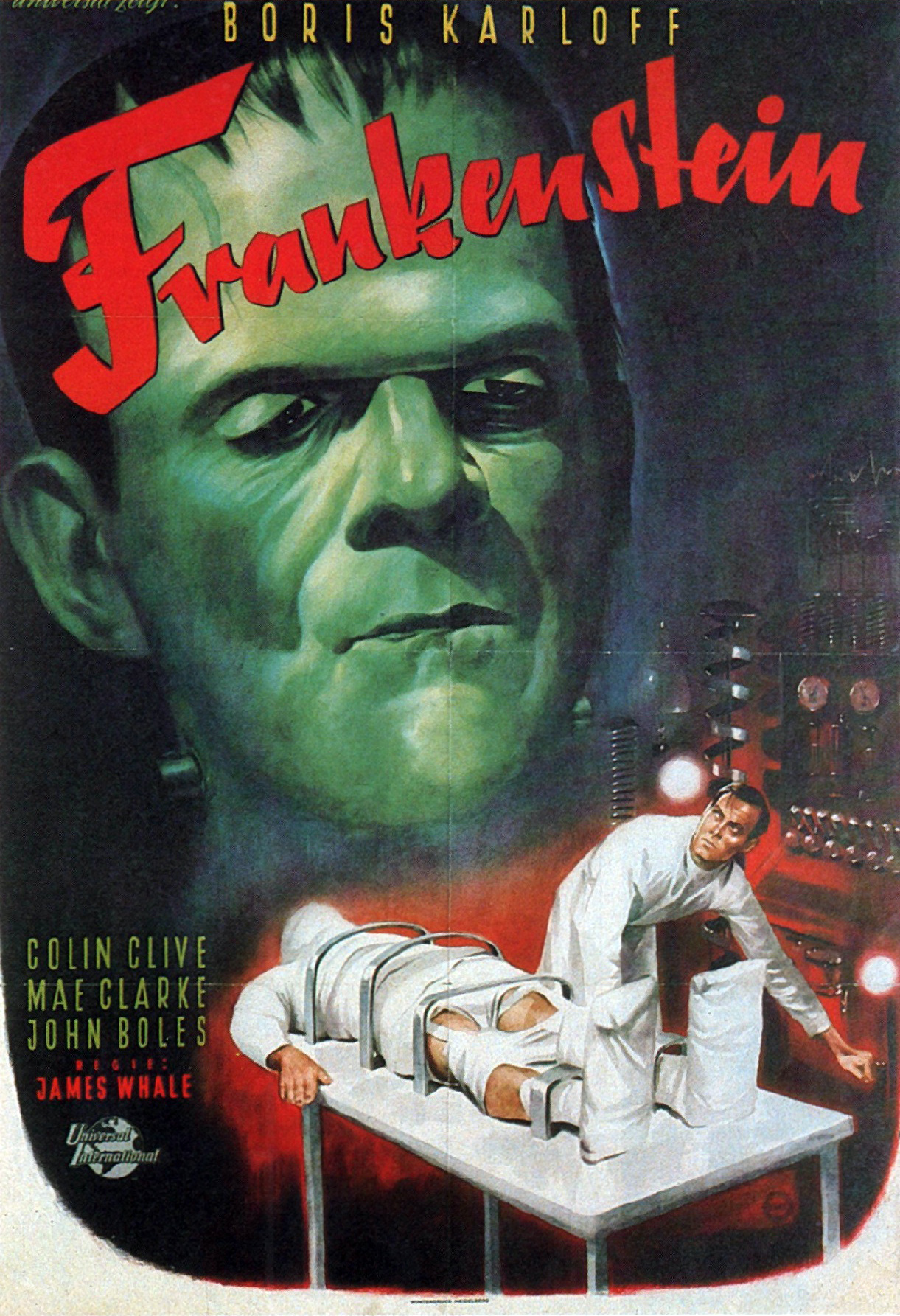“With how many things are we on the brink of becoming acquainted, if cowardice or carelessness did not restrain our inquiries.”
― Mary Shelley, Frankenstein
When Mary Shelley published the novel Frankenstein; or The Modern Prometheus in 1818, it received mixed critical reviews at best, but became wildly successful with the public and remains one of the most widely recognized and influential horror figures to this day (along with Dracula, the Werewolf, and the Mummy). The book, which is one of my all time favorites, is analogous to the Greek myth of Prometheus who stole the knowledge of how to make fire from the gods to give to humans. Similarly, Dr. Frankenstein, supposedly using medical science, steals from God (or nature, depending on your interpretation) the ability to create life in the form of Frankenstein's monster. While the book is an excellent exercise in examining the dualistic nature of things like fire (good: brings light and warmth, bad: can burn or destroy) and knowledge (good: can bring light and warmth, bad: can burn and destroy), it is almost certainly remembered for the "monster" who was created from the body parts and organs of the dead and reanimated with the help of the electricity provided by a particularly violent lightning storm. When Shelley's book was first published, this was an incredibly radical idea (and still is), and many of her critics panned the book because the premise was so far-fetched, and "horrible, disgusting, and absurd".
Well, perhaps the book is still horrible and disgusting (something that I think adds to rather than detracts from its popularity), but absurd, it may not be. In the late 1700's and throughout the 1800's many scientists (e.g. Ben Franklin) were playing around with lightning. Toward the end of the 1800's and 1900's physiologists discovered that small electric shocks could stop a heart from beating, but more importantly that larger shocks could restart it. This led to the electric defibrillators that we still use today. BUT, as exciting as that is, restarting a heart that is alive is not the same as re-animating tissue from a dead body. The first real success in that regard came with the first organ transplants in the 1950's, where organs like kidneys and hearts were taken from recently deceased patients and transplanted into live patients where they could resume their normal functions and save lives. However, until now, the organs had to come from someone nearby and who had just died because the tissue would start dying. Keeping the organ in question on ice helped to increase time since death and distances that organs could be transported before being transplanted. BUT, according to a press release just last week, researchers at St. Vincent's Hospital in Australia reported that they had successfully transplanted hearts into patients that had come from patients who had been dead longer and who had lived farther away from the recipient patients than ever before. How did they accomplish this impressive feat? With the help of the ex vivo organ care system (OCS) also known as the "heart in a box". By connecting the donor heart to an artificial circuit that keeps it warm and beating and perfused with a nutrient filled fluid Doctors at St. Vincent's found that they could now use hearts from donors very far away and possibly even from donors who may have been dead, or at least brain dead, for longer periods of time. If these initial results are replicated, this could mean good news for people who are on the very long wait lists for donor hearts, and maybe for people waiting for other organs as well as systems similar to the heart OCS are developed for other organs.
Although, if your cardiologist's name happens to be Frankenstein, you still may want to get a second opinion. Happy Halloween!
Friday, October 31, 2014
Subscribe to:
Posts (Atom)







